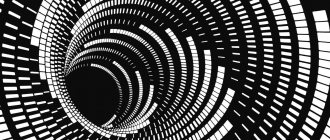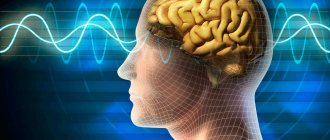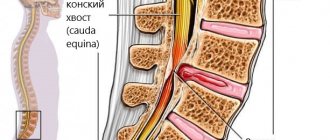Auditory hallucinations are a form of hallucination in which a person may hear different voices and sounds that are not actually there. This condition can occur for a variety of reasons, and it does not always indicate the presence of a mental illness. The reasons for their appearance may be other. But at the same time, this condition in any case requires the attention of specialists and treatment. Treatment for such hallucinations involves identifying the cause of their occurrence. In most cases, this requires treating the cause, not the effect.
Symptoms of auditory hallucinations
Despite the fact that auditory hallucinations can occur for a variety of reasons and have different manifestations, their symptoms are largely similar. This illness is that a person hears voices and sounds that are not really there. But at the same time, he can often sincerely believe in their reality and not understand that all this only seems to him. It is interesting that this phenomenon can sometimes occur not only with all kinds of diseases or painful conditions, but also in some conditions in completely healthy people.
Symptoms of auditory hallucinations include a variety of voices and sounds. It can be human voices, barking dogs, various creaks, rustles, rattles, the roar of a car or other engine, whistles, laughter, the sound of water and much more. At the same time, many people can hear completely understandable phrases or words. Some types of such hallucinations pose virtually no danger to both the patient himself and those around him, while others can cause serious harm to himself or jeopardize public safety.
Professional psychiatrists often divide such hallucinations into true and false. In the presence of true hallucinations, their manifestation seems quite realistic. Therefore, a person has no doubt that these voices and sounds actually exist. And with false hallucinations, the person with whom this phenomenon occurs also doubts the reality of this phenomenon.
Most of these voices and sounds are practically harmless to the patient himself and the people around him. This phenomenon can only complicate the patient’s life. In many cases, it contributes to the disruption of his work and social life, impairs sleep and interferes with the conduct of many usual activities.
And the most dangerous are hallucinations, which are usually called imperative. In this case, the voices that inhabit his head and seem very real may force him to kill someone or himself, steal something, or commit other dangerous or illegal actions. The patient may be forced to drive a car at high speed, jump from great heights, commit suicide, or engage in self-harm. At the same time, he is completely confident in the reality of such voices and phrases, and therefore often, without a shadow of a doubt, commits such dangerous and criminal actions against himself or other people. Such events must be properly distinguished from deliberate actions.
What causes hypnopompic hallucinations?
The exact reasons usually depend on the individual. One experiences them as a result of a sleep disorder, while another experiences them as a result of taking a psychoactive drug. In addition, what a person sees may be associated with a unique accumulated subconscious experience. And the way it is perceived depends on the psychological state. Below we will look at common reasons.
Internal effects on the brain
Brain activity . Direct stimulation of the brain in certain areas leads to hallucinations, even among those who have never experienced them. By stimulating the optic or auditory nerves, visual or acoustic hallucinations can be created.
REM activity . The REM sleep phase is characterized by increased brain activity. Her dream begins and ends with her. It can also recur during sleep. It is at this stage that a person dreams. Therefore, sudden awakening during sleep can cause hallucinations. Also at this time, a person can catch sound, see light and feel touch, which also leads to independent interpretation, and, as a result, to hallucinations.
Brain damage . The risk of hallucinations increases if there are structural problems in the brain. They may be present from birth or appear as a result of severe brain injury.
Brain waves . These waves are responsible for the human state and control a wide range of functions: sleep, learning, memory, emotions, etc. During hypnopompic hallucinations, the activity of brain waves changes and mainly slow waves predominate.
Consciousness . The hypnopompic state is characterized by a highly emotional and dream-like state of consciousness. At this moment, the brain tries to logically comprehend what is happening. Which, in turn, due to lived experience, leads to subjective interpretations.
Neurotransmission . Neurotransmitters are messengers through which nerve cells communicate with each other. They play one of the most important roles in the functioning of the brain. When artificially increased (as a result of medications or drugs), various neurotransmitters affect sleep and can cause hallucinations. For example, increased dopamine levels can lead to hallucinations.
Psychodynamics . During the hypnopompic state, unconscious or subconscious experiences may open up to consciousness. This will contribute to the occurrence of hallucinations. We can say that the visions, in this case, will be the totality of these experiences. []
External influence on the brain
Drugs . Addicts often have strange or vivid dreams. They also experience both hypnopompic and hypnagogic hallucinations. This can be caused both by the action of the drug itself and its effect on consciousness, and by damage to the brain due to its long-term use.
Pharmaceuticals . Those medications that affect neurotransmission in the brain can cause hypnopompic hallucinations. These include: antidepressants, psychostimulants, antipsychotics, acetylcholinesterase inhibitors, etc. For example:
- Acetylcholinesterase inhibitors increase acetylcholine concentrations. As a result, cognitive functions (memory, intelligence, learning speed) improve. But, at the same time, this increase changes the duration of REM sleep, which increases the likelihood of visions occurring.
- Tricyclic antidepressants also change sleep patterns. And most patients can hallucinate when they wake up. [, ]
Meditation . Those who have meditated for a long time may remain semi-conscious or fully conscious during the transitional (hypnopompic) phase. And he will be aware of any possible hallucinations that often occur during REM activity.
Sensory deprivation . Sensory deprivation is the blocking of one or more senses. Wearing a blindfold, earplugs, holding your nose, or being in a state of weightlessness are all types of sensory deprivation. The thing is that the brain is constantly scanning the environment for basic sensory inputs (vision, hearing, smell and tactility). In the absence of one, several or all of them, the brain begins to fill in these gaps. Which leads to hallucinations. Those who sleep with earplugs, wear a blindfold to sleep, or have a bad runny nose increase their chance of experiencing hypnagogic or hypnopompic hallucinations. []
Sensory deprivation
Sleep deprivation . Sleep deprivation alters brain activity, hormones, and neurotransmission. All these factors affect brain performance and, as a result, can cause hypnopompic hallucinations. Chronic sleep deprivation increases this risk. []
Causes of auditory hallucinations
The causes of auditory hallucinations can be very different. Despite the fact that most often they are a manifestation of various mental illnesses, this phenomenon is also inherent in poisoning with all kinds of psychoactive substances. In addition, hallucinations may indicate other diseases and conditions that are not mental. There are also cases when they appeared in healthy people under certain conditions.
In the modern world, a very common cause of such hallucinations is poisoning of the body with psychotropic substances such as alcohol and various types of drugs. However, such people are not always recognized as drug addicts or alcoholics. In addition, the phenomenon can also occur during ordinary household poisoning with various poisons, food products of poor quality, household chemicals, all kinds of gases, etc.
Hallucinations are common in people with mental illness. Voices and sounds can be heard by patients with schizophrenia, Alzheimer's disease, senile dementia and similar diseases. Similar phenomena can occur with traumatic brain injuries, brain tumors, and certain types of infectious diseases that affect brain activity. In addition, they can result from a strong increase in body temperature and some other painful conditions.
In addition, sometimes completely healthy people can hear various voices that do not really exist. This sometimes happens during severe fatigue, when a person has not slept for several days in a row, and in some individuals, upon awakening, when it is difficult to draw the line between reality and sleep. Sometimes people can react in this way to the death or serious illness of loved ones, violence or other serious psychological shock. Auditory hallucinations can occur in people of all ages, from young children to the elderly.
Visual type of pathology
Visual hallucinations - the appearance of various images. They can be very bright or very dim, living or inanimate. Sometimes apparent objects or people are motionless, and sometimes they create dynamic scenes in which the patient himself is involved.
Cases when they occur while going to bed or waking up are not violations and do not require consultation with a doctor. If symptoms occur at other times, the person needs qualified medical care.
The causes of such hallucinations may be hidden in illness or acute depressive states. For example, hallucinations are one of the symptoms of schizophrenia. The disorder can be triggered by a specific action or phenomenon: a sharp increase in body temperature, migraine, taking medications, drugs or alcoholic beverages. Tumors in the brain also lead to hallucinations.
It is worth noting that you should prepare in advance for a consultation with a doctor. It is necessary to prescribe all medications that are taken on a regular basis, because many of them (improving heart function, relieving cramps, pain, signs of allergies) can cause non-existent visual images.
Types of auditory hallucinations
Such hallucinations can be very different. At the same time, they are divided into true and false. The patient can clearly hear different words and phrases, as well as human voices and sounds of wildlife, car sirens, barking dogs, ringing bells and many other sounds.
Professional psychiatrists identify the following types of auditory hallucinations:
- Tinnitus is all kinds of noises like whistling, grinding, crackling, and the like;
- Acoasms are sounds that differ in specificity. These may include dripping water, the sound of the surf, wind, the sound of rain, barking dogs, the noise of cars, the howl of a siren, the ringing of bells and sounds close to them;
- Phonemes - this type of auditory hallucination is often considered the most dangerous. After all, when it appears, the patient can clearly hear certain words and phrases, sometimes spoken by a specific and very real person. In many cases, such illusions can be very dangerous for the one who hears them or for the people around him.
Types
There are different types of hypnopompic hallucinations. The most common are visual images such as objects, people, fragments of light, etc. Another common type is sounds that are not based in reality but are perceived by the brain.
Visual . Abnormalities in your brain anatomy, neurotransmitter activity, and unconscious/conscious processes influence the visual hallucinations that occur during the hypnopompic state. When the activity of the primary visual cortex of the brain is disrupted, simple visual effects can be seen. If the disorder is observed in both the primary and other visual areas, more complex hallucinations will be observed, for example: complex figures, numbers, people, shadows, etc.]
Auditory . The second most common type of hypnopompic hallucination involves sounds or voices. They can be subtle and last for several minutes, or they can be loud and last only a few seconds. Auditory hallucinations are associated with the REM stage. However, these sounds may be caused by abnormal activation of the auditory cortex. The greater the activation, the more complex the sounds, for example: tapping, buzzing, music, talking, etc.
Tactile . Tactile hallucinations most often occur in cases of sleep paralysis, in which a person is unable to move, but is already in a semi-conscious state. In such cases, pressure is felt on the chest (as if someone is sitting on it), it becomes difficult to breathe and a feeling of panic arises.
Other types (less common) . In addition to visuals, sounds and touches, other types of hallucinations may be experienced. These include motor (the feeling of flying or falling), olfactory (smell), and gustatory (taste). They are usually found in combination with one of the above (more common) types.
Auditory hallucinations in adolescents
Auditory hallucinations are quite common in adolescents. In many cases, they are caused by all sorts of psychological problems in relationships with parents and peers, difficulties in growing up and puberty, and can also be the result of violence or severe shock.
In addition, traumatic brain injuries are common in adolescence, which can also lead to auditory illusions. They can also be the result of infectious diseases or occur at high temperatures.
Modern schoolchildren, often under the influence of older friends, actively experiment with alcohol or drugs. Often their overdose leads to the formation of various types of hallucinations, including auditory ones.
Also, this phenomenon in a teenager can be a consequence of mental illness.
Auditory hallucinations in children
Auditory hallucinations in children of preschool and primary school age are a very common phenomenon. At this age, they are often caused by fever, various infectious diseases and traumatic brain injuries. But they can also appear due to violence, serious psychological shock as a result of any events they have seen or experienced that are terrible for them. Poisoning with various poisons and toxic substances can also cause a similar phenomenon. In addition, such hallucinations sometimes indicate the presence of a mental illness. But sometimes similar illusions arise in healthy children due to severe fatigue.
Hallucinations: when should you see a doctor?
Today we will talk about hallucinations - the “exclusive” field of activity of “mental doctors” (after all, this is how the word “psychiatrist” is translated). If we talk about this symptom, then the phrase “lost my mind” and such characteristic terms as “madhouse” and “orderlies” immediately appear next to it. In fact, not all hallucinations require treatment with specific drugs, but this will be discussed below.
First you need to understand what hallucinations are. A more correct term from the point of view of psychiatry would be “deceptions of perception.”
In general, the entire perception system is divided into several parts: the peripheral region, pathways, and the cortical analyzer. The peripheral area is represented by one specialized organ (eye, ear) or a complex of receptors (tactile receptors in the skin). Pathways are various nerve fibers that carry signals from receptors to the central nervous system (CNS). The third part - the cortical analyzer - represents areas of the sensory cortex (temporal, occipital and parietal cortex), where the primary reception of signals and their further processing occurs. Perceptual deceptions are associated with distortions in the last part of the analyzer.
August Natterer. World axis with rabbit.
The illusion of deception according to the brain
Psychiatrists include illusions in perception deceptions. Illusion is a distortion of an existing real object, the appearance of a false image instead of it. As a rule, illusions arise in emotionally tense states or when the nervous system is exhausted. For example, after watching a horror movie, you are left at home alone, and now in the night rustles outside the window you begin to imagine someone’s voices and steps, and the coat rack in the hallway suddenly turns into a human figure. Real images (sounds outside the window, a hanger) are distorted due to altered brain function and turn into completely different ones.
Our brain looks everywhere for patterns - stable and familiar information structures. Patterns can be visual or auditory, or represent entire ideas. The brain is capable of finding patterns, and this desire to highlight them in the general information “noise” of the external environment is called patterning (you can read more about patterning in Michael Shermer’s book “Secrets of the Brain. Why do we believe in everything?”).
So, thanks to this pattern and horror films, the coat hanger turned into a person, and the noise of leaves turned into voices. Illusions in themselves are not something painful; the condition in which they arose must always be taken into account. Most often, a person experiencing illusions simply needs to calm down and relax. However, in some cases, illusions are a precursor to a serious mental disorder. If you have doubts about your own “normality” or the “normality” of a loved one, then you always have the opportunity to visit a psychiatrist and ask him questions about this.
Where is the squirrel? Over there!
If an illusion is just a distorted perception of an existing object, then a hallucination is the perception of an image without an object. Literally, a person sees something that is not there, hears something that no one hears except him. Hallucinations are different in the sphere of perception: auditory, visual, olfactory, gustatory, tactile.
August Natterer. A wonderful shepherd.
In principle, doctors distinguish two groups of hallucinations - true and pseudohallucinations. True hallucinations occur when various types of rather gross pathological processes affect the brain: intoxication, tumor, vascular damage, trauma. A characteristic feature of true hallucinations is that they are in the sphere of direct perception of the patient. For example, during delirium tremens (“delirium tremens”), devils will run around the patient himself. The second important sign will be the patient’s belief in the reality of the hallucinatory image and the desire to interact with it. The delirious patient mentioned above will actively catch these devils, involving his loved ones in the hunt for them. Most often, true hallucinations are bright and intense: the patient describes the devils to the doctor in detail, indicating the colors and features of the external appearance of the messengers of Hell. If you prescribe appropriate medications (neuroleptics) or eliminate the causes of the visions, the intensity of hallucinatory experiences decreases until they disappear completely.
Another type of hallucination is pseudohallucination. While true hallucinations can occur in a variety of disorders, pseudohallucinations virtually always indicate that a person has schizophrenia. You can compare true hallucinations and pseudohallucinations with each other, and then the difference will become obvious. If true hallucinations arise in the area of direct perception, then with pseudohallucinations the patient will tell us that the voice comes from areas that are not directly accessible to him. “I hear voices from the street”, “A voice in my head says that...” - a patient in a doctor’s office will say something like this. Pseudohallucinations are most often perceived by the patient as alien, “induced” on him by someone. In most cases, a person with schizophrenia will say that “voices” or other unpleasant sensations in his body are the consequences of the otherworldly actions of other people or the influence of special equipment.
In the initial period of the disease, the patient may mistake “voices in the head” for real voices. For this reason, he begins to look for their source: run out of the house, watch at the door. If pseudohallucinosis is offensive in nature, then the patient may swear and fight with a passerby, mistaking him for the offender. One of my patients got into fights like this for several weeks until he started taking antipsychotics. Pseudohallucinations are not as vivid as true hallucinations. When describing his experiences, a patient with hallucinosis often uses expressions such as “disembodied voice”, “I can’t understand who is talking to me - a man or a woman.”
Differential diagnosis between pseudohallucinosis and true hallucinations is one of the simplest tasks that a psychiatrist solves in the course of his daily professional activities. The resulting hallucinations are associated with increased activity of the dopamine system of the brain. Antipsychotics block dopamine receptors, and thereby fight hallucinatory experiences.
Oh, yes, I saw it in a dream...
There are also a number of specific hallucinations that do not require mandatory treatment and occur even in mentally healthy people. Such hallucinations include, for example, Charles Bonnet's hallucinosis. It occurs in older people who have severe vision problems up to and including complete blindness. Such patients “see” figures of people, animals, and patterns in front of them. Often older people simply do not talk about having such paintings, fearing that they will be sent to a psychiatric hospital. Hallucinatory images can be extremely vivid, even fantastic. One patient with a similar hallucinosis described seeing a cart with dark-skinned people in traditional Russian attire. Charles Bonnet hallucinosis is not accompanied by sound, and patients most often understand that what they see is not reality. As a rule, I do not insist on treating this type of hallucinosis unless the patient requests it. If he is bothered by the manifestations of this disorder, then the problem is solved with a small dose of antipsychotics.
August Natterer. My eyes during visions.
Other perceptual deceptions that occur in healthy people are hypnagogic and hypnopompic hallucinations. Hypnagogic hallucinations occur when a person falls asleep and the boundary between sleep and wakefulness becomes blurred. Various scenes and images appear before his eyes, which he can later recall with surprise. In the case of hypnopompic hallucinations, the person experiences perceptual deceptions upon awakening. He can see spiders and snakes around him and believe in their reality. This is a rather frightening situation, but it can be solved not by prescribing antipsychotics, but by normalizing sleep. Hypnagogic and hypnopompic hallucinations occur occasionally in healthy people and are not considered a sign of mental disorder.
Text: Victor Lebedev, psychiatrist
Source link
Views: 899
Auditory hallucinations after alcohol binge
After an alcoholic binge, all kinds of hallucinations often appear, including auditory ones. Moreover, they are often very dangerous and can lead to very unpleasant or terrible consequences. Indeed, in such a state, the alcoholic experiences various fears, cannot sleep normally and react to the surrounding reality. This phenomenon is caused by exhaustion of the body by prolonged consumption of large quantities of alcoholic beverages, often low-quality or surrogate ones. Many alcoholics in this state may hear distinct voices that tell them to cause significant harm to their own health or commit some other illegal or dangerous act. Therefore, often after a few days after drinking, many drinkers commit suicide, murder, or become guilty of serious road accidents.
How to treat auditory hallucinations
If signs of this phenomenon occur, you should not self-medicate, as it can pose a serious and even fatal danger to the body. Also, you should not hope that hallucinations will go away on their own without medical intervention. Therefore, a person who observes such symptoms in himself or his loved ones should not think about how to treat auditory hallucinations, but should consult a doctor as soon as possible. At the same time, it is not at all necessary that this problem will be treated by a psychiatrist, whom many people are very afraid to contact. After all, such auditory phenomena often occur in diseases or conditions not related to psychiatry. And the very appeal to a psychiatrist does not mean at all that such a person will be declared incompetent and will soon become an outcast from society. Modern psychiatry is very far from what it was in the twentieth century. Now many diseases that were previously considered incurable or socially dangerous are quite amenable to drug therapy.
Treatment
There are various treatment options that can help reduce the likelihood or intensity of hypnopompic hallucinations.
Brainwave modification . If you want to improve your sleep quality and reduce abnormal brain wave activity, you may want to consider neurofeedback, binaural beats, or neural stimulation.
Avoid alcohol and drugs . If you use alcohol, nicotine, stimulants, or other substances that affect perception and brain activity, try eliminating them for a while and see if your sleep improves.
Pharmaceuticals . Mentally ill people can be helped by various antipsychotics, antidepressants, etc. On the other hand, it is important to understand that various pharmaceutical drugs themselves cause hypnopompic hallucinations. If you suspect that a drug you are taking is causing your hallucinations, you can talk to your doctor about possible dosage adjustments, changing your medication (such as the time of day you take it), stopping it, or switching to a different drug.
Improved sleep (quality + quantity) . Since many sleep disorders (including hypnopompic hallucinations) are the result of poor sleep quality or lack of sleep, correcting these two aspects and maintaining healthy sleep hygiene will reduce the frequency of their occurrence.
Treatment of sleep disorders . Since most people with hypnopompic hallucinations have a sleep disorder, it is important to treat it before expecting the hallucinations to go away. This could be working with a sleep specialist, keeping a sleep diary, following a strict schedule, or taking medications. In any case, you should consult a doctor.
Sleep position . Sleeping on your back increases your risk of hallucinations when you wake up. Try sleeping on your side or stomach and see what happens.
Reducing stress . In people with constant stress, the brain produces stimulating neurotransmitters (dopamine, norepinephrine and epinephrine), hormonal imbalance occurs (too much cortisol) and the person is constantly stressed. Therefore, it is necessary to reduce and, if possible, eliminate stress loads.
How to get rid of auditory hallucinations
In addition, often the answer to the question: “How to get rid of auditory hallucinations?” The psychologist also knows. Contacting him will be advisable if this problem is caused by violence, psychological trauma, severe fear or puberty in adolescents.
If such hallucinations are suspected in children, parents should be able to distinguish this problem from the manifestation of a child’s violent imagination or the child’s retelling of his dreams. And parents of teenagers, if they have sound or other hallucinations, should exclude the abuse of alcohol, drugs and other psychoactive or toxic substances.









